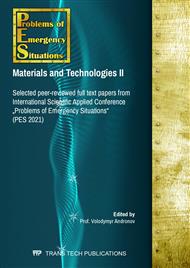p.168
p.177
p.185
p.193
p.203
p.210
p.221
p.235
p.242
Metal Hydride Technologies for Separation of Hydrogen Isotopes
Abstract:
The paper considers the issue of theoretical prediction of characteristics at which separation of hydrogen isotopes occurs in the “gas-metal” system. Mathematical modeling of sorption is based on the use of the lattice gas model often used for metal hydrides. In contrast to the Leicher ideal solution model, it is taken into account that the dissolution of hydrogen in the metal increases the volume of the crystal lattice. This leads to additional contributions to potential energy. The model also takes into account the interaction between the atoms of the incorporated (absorbed) hydrogen isotopes. These phenomena are described by the methods of thermodynamic perturbation theory. The different composition of the gas (protium and deuterium) in contact with the metal leads to the fact that sorption, accompanied by the formation of hydride, proceeds for the same temperature at different equilibrium pressures. This phenomenon characterizes the isotope effect. The temperature dependences of the pressure on the "plateau" for palladium hydride and deuteride are obtained. The differences in these pressures can be used for the practical use of metal hydrides in the separation of hydrogen isotopes.
Info:
Periodical:
Pages:
203-209
Citation:
Online since:
July 2021
Price:
Сopyright:
© 2021 Trans Tech Publications Ltd. All Rights Reserved
Share:
Citation:


